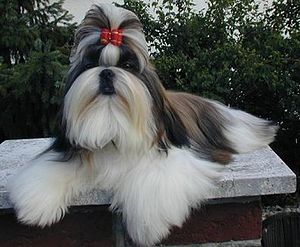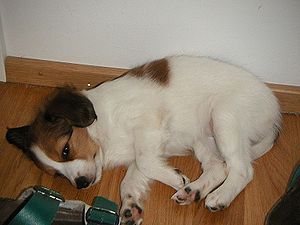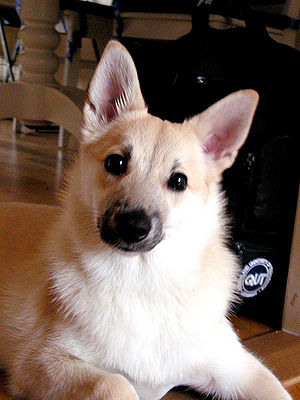 |
| Vital Statistics: |
| Place of Origin: Tibet, China |
| Group: Companion dog, Toy |
| Height: 9-10 1/2 in. |
| Weight: 9-16 lbs. |
| Life span: 11-14 yrs. |
| Trainability: high |
| Good with children: yes, with gentle older children |
| Good with other pets: yes |
The Shih Tzu was a companion and watch dog in the Chinese imperial cours. Dogs brought from Tibet to China’s Forbidden City in Peking were developed into the Shih Tzu. They were brought to England in 1930 where their popularity spread throughout the world. The Shih Tzu was thought to be the oldest and smallest Tibetan holy dog. The name Shih Tzu means Lion Dog. It is also known as the Tibetan Temple Dog and the Chrysanthemum Dog because its face resembles a flower. In Buddhist mythology, Buddha rode a lion and carried a Shih Tzu. The breed was honored as the dog loved by Buddha. Shih Tzus are believed to be incarnations of mischievous household gods. The are also thought to carry the souls of Lamas searching for Nirvana.
What does the Shih Tzu look like?
The Shih Tzu’s head is broad with long hair on the crown and muzzle. It has a thick beard and mustaches. The muzzle is short and square ending in a black nose. Eyes are large, round and dark. Ears are large and pendent, covered with thick long hair. The tail is set high and curled over the back. The Shih Tzu’s coat is very long and thick with a good undercoat. All colors are acceptable but dogs with white markings on the forehead and tip of the tail are particular favorites. The coat needs regular daily grooming.
What is the Shih Tzu’s temperament?
The Shih Tzu is an affectionate little dog. It can be stubborn and needs firm, gentle training and socialization to be reminded who is master. If shown the rules, they will not have behavior problems. The Shih Tzu can be good with children who treat it gently and is usually good with other pets. Proper training will bring out its sweet nature.
What are the Shih Tzu’s uses?
Although used as a watchdog in the Chinese imperial courts, the Shih Tzu is primarily a pet and great companion dog.
Possible Health Issues
Missing or misaligned teeth, periodontal disease, patellar luxation, cleft palate or lip, eye problems, renal dysplasia (abnormally developed kidneys), brachcephalic syndrome creating respiratory problems
- Affenpinscher
- Brussels Griffon
- Cavalier King Charles Spaniel
- Chihuahua
- Chinese Crested
- Coton de Tulear
- Dachshund
- English Toy Terrier
- Havanese
- Italian Greyhound
- Japanese Chin
- Maltese
- Manchester Terrier
- Mi Ki
- Miniature Pinscher
- Moscow Toy Terrier
- Papillon
- Pekingese
- Pomeranian
- Pug
- Silky Terrier
- Toy Fox Terrier
- Xoloitzcuintli
- Yorkshire Terrier
- Alaskan Klee Kai
- Bichon Frise
- Bichpoo
- Brussels Griffon
- Bull Terrier
- Bulldog
- Cardigan Welsh Corgi
- Cavalier King Charles Spaniel
- Chihuahua
- Chinese Crested
- Coton de Tulear
- Eurasier
- French Bulldog
- German Spitz (Giant, Standard, Toy)
- Hairless Khala
- Havanese
- Japanese Chin
- Japanese Chin Dog
- Keeshond
- Lhasa Apso
- Lowchen
- Maltese
- Mi Ki
- Miniature Pinscher
- Moscow Toy Terrier
- Norwegian Lundehund
- Papillon
- Pekingese
- Pomeranian
- Poodle
- Portuguese Water Dog
- Pug
- Sanshu
- Schipperke
- Schnorgi
- Shiba Inu
- Tibetan Spaniel
- Yorkshire Terrier



